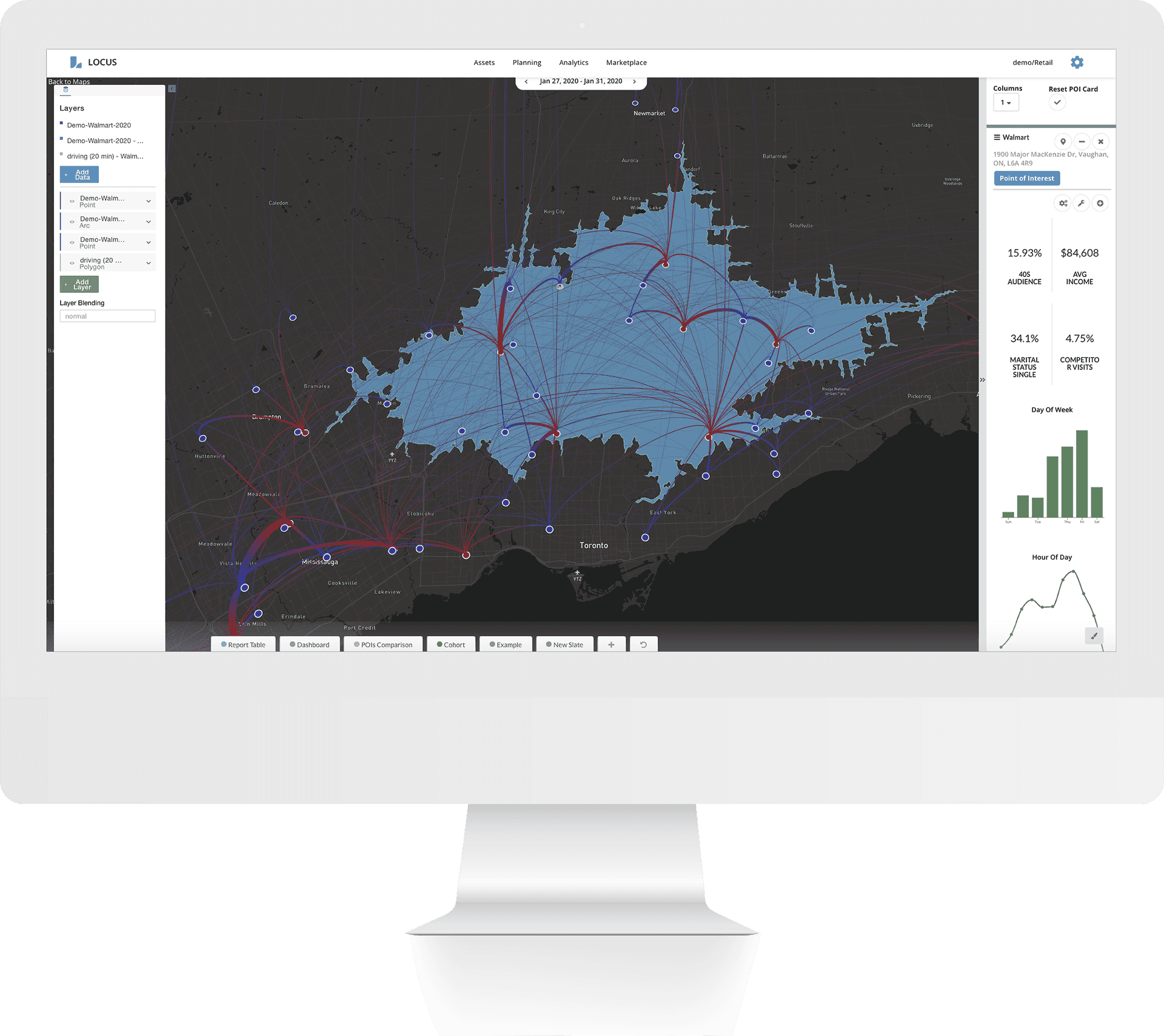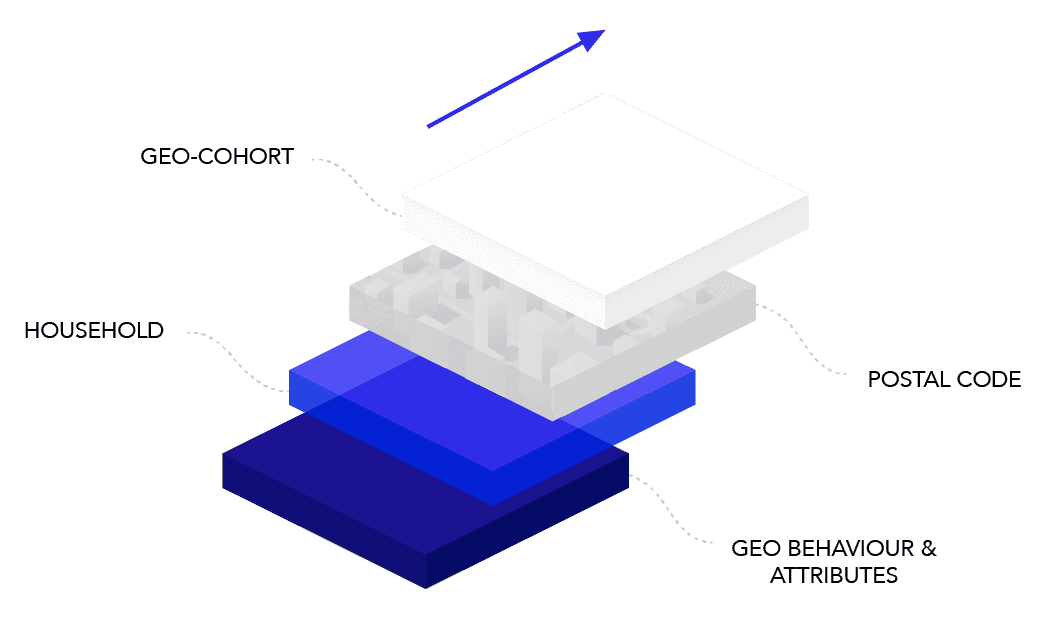The Leading Geospatial Marketing Platform
Atom is the next generation geospatial DSP built for a privacy-forward, identity-free future. No longer requiring all of the unique identifiers like deviceIDs and cookies that are currently being phased out, EQ’s geospatial DSP utilizes a users current location and the insights, propensities, and behaviour implied by that location.
Leveraging our highly sophisticated POI management protocols and hyperlocal toolset for real time targeting, EQ is proud to release GeoCohorts - the next generation privacy-forward methodology for aggregating and targeting users at scale.
Whatever your target market is, Atom is here to satisfy all of your programmatic media buying needs.
Consumers on the Go
While hyperlocal targeting may not be a new concept, doing it accurately, at scale and deriving valuable insights for campaigns has often fallen by the wayside in favour of broad categories with uniform radii. Atom comes with a categorized, global POI list that enables users to target the exact locations they want. Whether it is a global chain or all “mom&pop” coffee shops, combining custom polygon mapping and location by location reporting, Atom enables hyperlocal marketers to reach who they want, when they want, and derive the insights they need for campaign optimization or general business learnings.
Geocohorts
Building, activating and reporting on profiles based on where people work, live and play enables marketers to reach consumers that match their target, in a scalable and effective manner. But doing this in a privacy-first and data driven manner has been hard to do - until now. This is why we are proud to introduce GeoCohorts. Utilizing our Atom DSP, GeoCohorts combine millions of different data points to aggregate profiles and propensities up to the postal code level, and then allows for media activation on those findings through those postal codes. With 100’s of pre-built GeoCohorts immediately available, customizing, activating and reporting on a cohort of users has never been easier, more privacy-centric or future-proofed for the changes happening in the ecosystem.
Audience Creation & Activation
Every Atom account comes with 100’s of pre-built audiences that can be activated immediately. Our Locus builder tool allows for customization of new GeoCohorts from EQ’s data and its numerous partnerships, as well as onboarding and joining of brand or agency 1st party data. Atom uses machine learning optimization designed with geography at its core, enabling the bidding to surface and focus on the audience subsets to reach your KPI.
Insights
With powerful insights and geospatial visualizations, GeoCohorts are designed to not only drive digital media effectiveness, but business insights as a whole, outside of programmatic media. Understanding not just who your message is resonating with, but also where, gives a comprehensive profile that enables marketers to plan and execute in a privacy-first, cookie-free manner.
Why Geospatial?
Consumer privacy has constantly been at the front of adtech news for the last few years, but only recently has the effect of those
conversations started to shift for all the players inside of the ecosystem.
Legislative shifts, such as the European GDPR rules and CCPA in California, have changed how consumer data collection, consent and usage should be handled, but only at the regional level and the general effect wasn’t felt by the average media buyer. However, starting with the Safari and Firefox 3rd party cookies changes in 2019, Apple’s ATT enforcement that was released in May 2021 and Google’s announcement that they are phasing out 3rd party cookies in early 2022, this all changes. The tool sets used by media buyers to create audiences, activate upon them, and measure campaign effectiveness all rely on identifiers that won’t be available anymore.
Future State & Demystifying Geospatial
In the current landscape, an impressions full user profile, contextual environment and location are all known to the DSP, making a single path to purchase a viable solution. This is better for media buyers, but not for consumer privacy. In the new ecosystem, the trade off will form 4 new paths to purchase that use bits of information but can’t be correlated to the others, these are:
All of these new paths to purchase have different pros and cons, and use different methodologies to infer attributes of the user. One thing is certain, and that is the large majority of media buying next year will move from 1:1 targeting to an aggregate methodology of forming groups, or cohorts, or users that have similar attributes instead of an identifier of an exact attribute on a user. GeoSpatial itself requires a bit of demystifying. It is not solely targeting where someone is now, but using where someone lives, works and plays to build a profile to predict and influence future actions.
Where You Are
Proximity Location Targeting
Where You’ve Been
Past Visitation
Where You Live
Postal Segmentation

A Bright Future for Media & Privacy
The unique structural properties of geospatial allows data to be assigned highly accurately to an atomic geo level, say a household, while elegantly zooming out to higher aggregations during activation such as postal codes or custom geo grids for unique campaign needs. All this can be achieved while retaining properties of people that live, work or are observed there. The true power of geo cohorts get unlocked in their ability to intelligently zoom out and aggregate geographically until you’re not exposing or targeting any one user, or deanonymizing them.
Consumers awareness of privacy is changing, and with that so is the entire programmatic ecosystem. If not properly prepared, this will be an extremely hard time for marketers and agencies. However, with the proper innovation, toolsets, and media planning philosophy we can harness the power of programmatic media while putting consumer privacy at the center and building back trust in the industry.





